There can be your advertisement
300x150
Gypsum Board Ceilings for Kitchen with Photos
Besides that, a gypsum board ceiling will hide all flaws and guarantee achieving a perfectly flat surface, making it easy to apply a finishing coating.
Design of Gypsum Board Ceilings for Kitchen
One feature of this material is its ability to take any shape. The structure can have an oval, curved, circular, or classical straight configuration. This feature allows solving both technical and design tasks.
Before starting the installation work, you need to decide on the future construction. For this purpose, you should evaluate the ceiling height and room dimensions. If the kitchen is small, it's better to avoid multi-level systems. The second point is determining the style. It's from this that the color of the construction, presence of decorative elements, and type of lighting fixtures (including their placement) depend. It's also necessary to decide on zoning: if it's needed, different ceiling levels can be made above each sector.
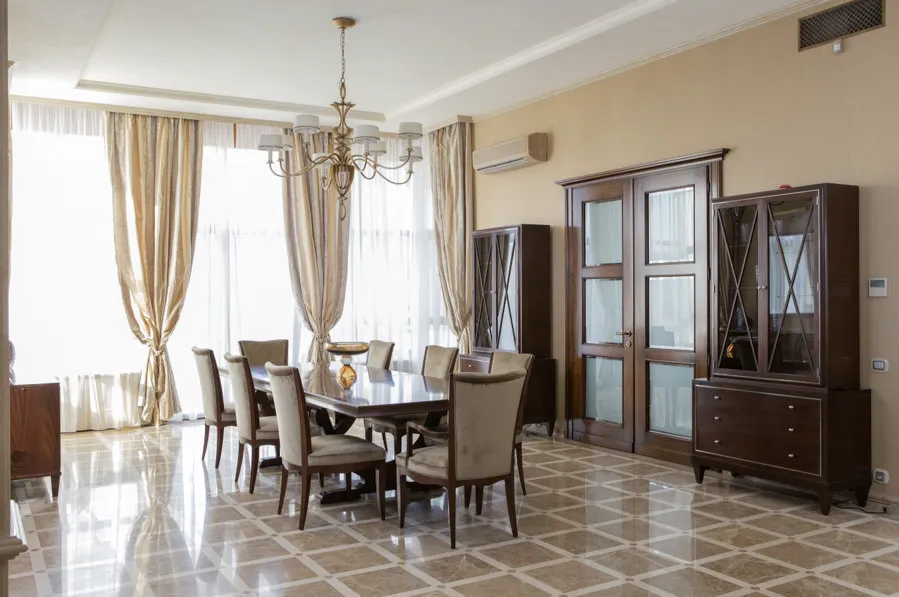
Pros and Cons of Gypsum Board Ceilings for Kitchen
One of the main advantages of the material is its affordable price. But the benefits don't end there. Gypsum Board:
- can 'breathe': this is facilitated by the free space between sheets and the main ceiling, as well as the structure of the material itself;
- does not impose special requirements on the power of installed lighting fixtures (for example, there is a limit of up to 60 W for suspended ceilings if using regular bulbs, and 30 W if halogen ones are used);
- has sufficient strength: the material is hard to damage;
- has good thermal and sound insulation properties;
- allows hiding utilities: electrical wiring, ventilation ducts, and pipes;
- can take various shapes, which is important for interior design.
What about drawbacks? There aren't many. Regular gypsum board doesn't tolerate high humidity well. However, this is quite solvable: there is special moisture-resistant material GKLV on sale. It's easy to distinguish it from standard: the sheets are painted green. Another drawback is the need for work to be done at a professional level. If you lack the necessary skills, it's more sensible to hire a specialist, as even the slightest deviation from the installation process can cause cracks. The last point: gypsum board systems are not recommended to be installed in new buildings, as the house will settle for 2-3 years, which can lead to destruction of the gypsum board structure.
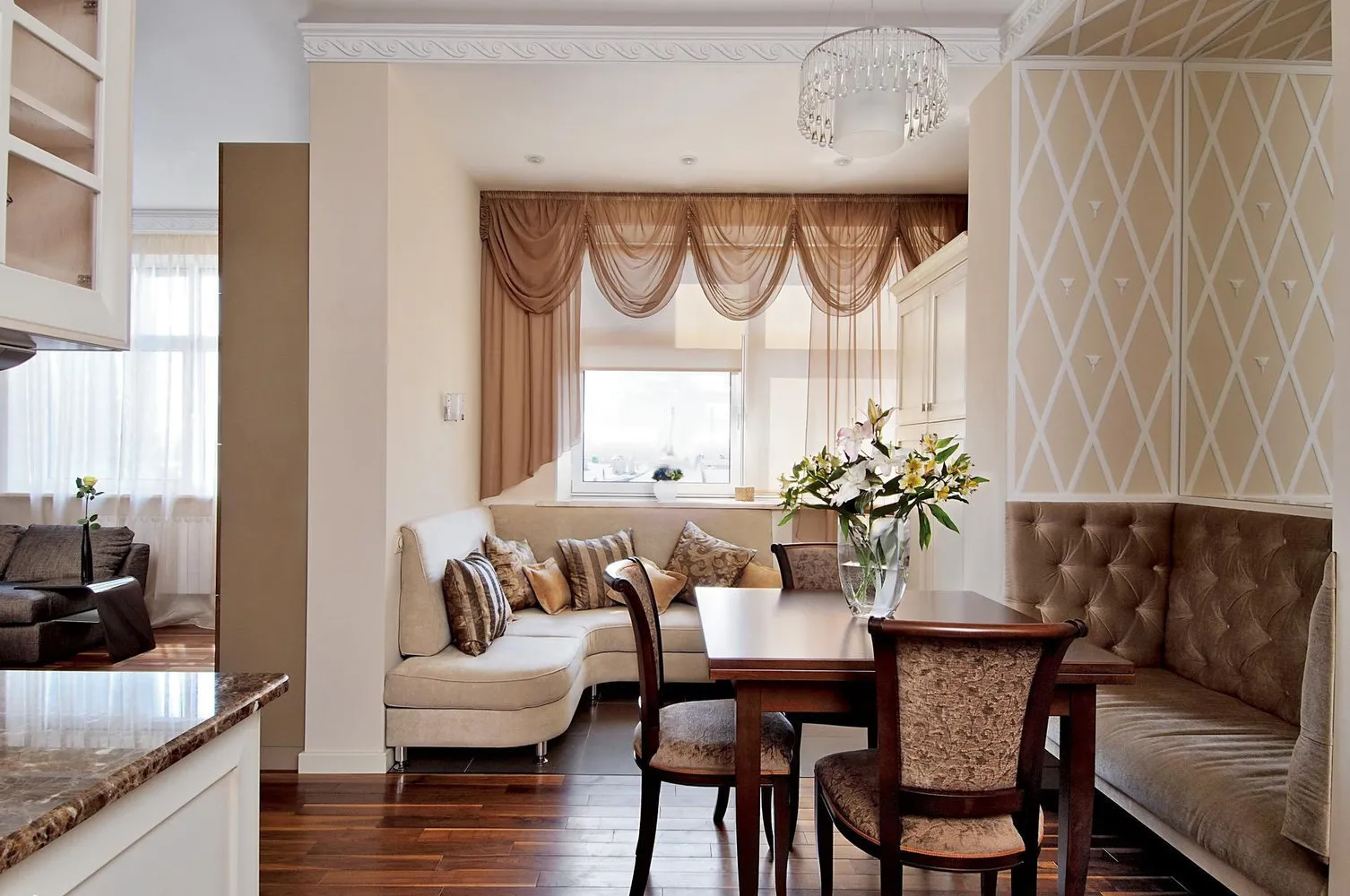
Mounted and Suspended Gypsum Board Ceilings for Kitchen
The difference between these two systems lies in the method of attaching sheets to the base. Let's look at this more closely.
- Suspended Ceilings. Special metal parts – hangers – are used here. They are attached to the main ceiling using anchors and screws. Then metal profiles are fixed to the hangers, and then gypsum board is attached to them. This method allows adjusting ceiling height and provides free space above the sheets for running utilities.
- Mounted Systems. In this case, the frame is attached directly to the slab. In some cases, if the ceiling is flat enough, sheets are fixed directly to the base.
- Combined Structures. This implies installing both mounted and suspended ceilings in one room. This method is very convenient for setting up multi-level systems.
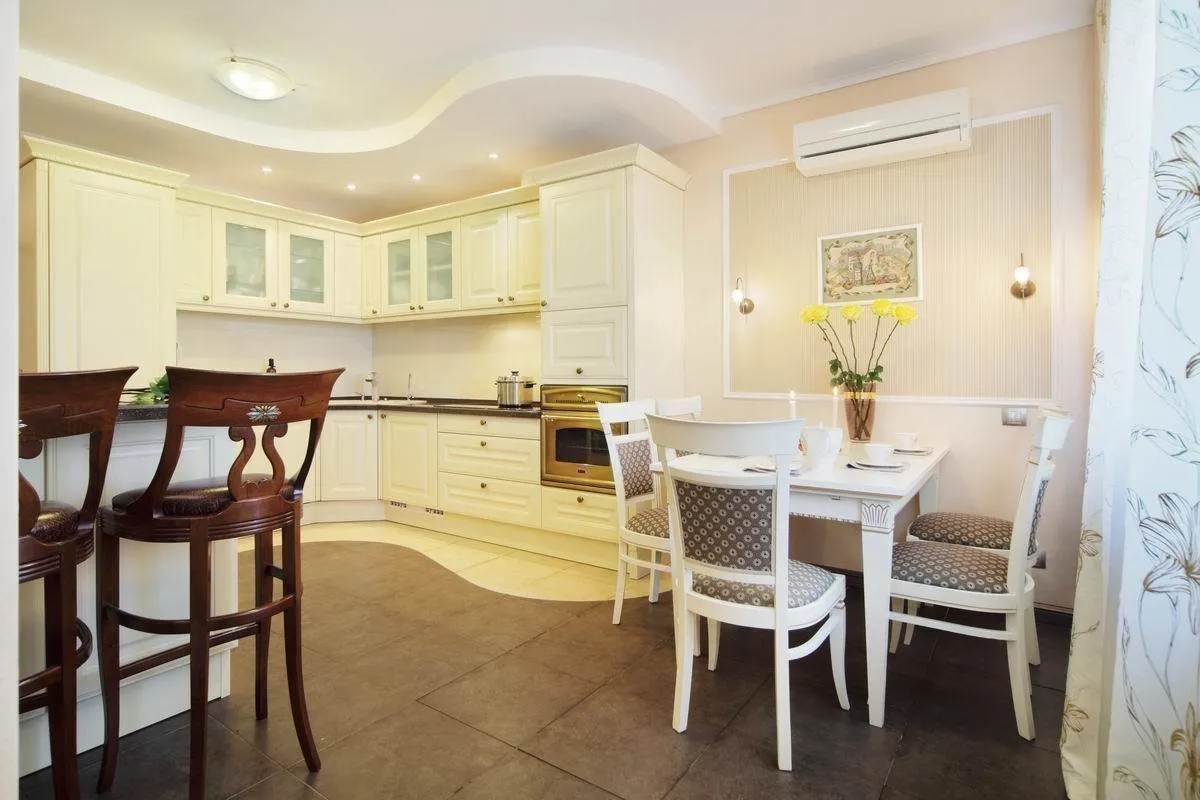
Types of Suspended Gypsum Board Ceilings
Choosing the right type of suspended ceiling will help organize space in the kitchen, zone it if necessary, and simply create an attractive structure.

Design: Valeria Dzhyuba
Single-Level Systems
The simplest option suitable for any kitchen regardless of its area. The surface, if it is carefully spackled and painted, will visually resemble a classic plastered ceiling. Using GKL and various colors, you can organize zoning in the room. Make a light surface above the table where people eat, and use more saturated shades over the cooking area. In the end, the dining zone will attract attention. Zoning is also emphasized by lighting fixtures: hang a small chandelier above the table, and install adjustable spotlights over the working area.
If you want something original, a single-level ceiling can be decorated with a 3D image. For this, draw the desired pattern or ornament on the surface and outline it using liquid paper. After drying, paint the surface in the usual way.

Two-Level Ceilings on Kitchen from Gypsum Board
Such structures provide more opportunities in terms of design compared to single-level systems. Surfaces with different heights give volume to the room. The highest parts of the ceiling can be located in the center of the kitchen or above the working zone. The first option is usually preferred. The step between different levels can be straight or curved – everything depends on the chosen interior style and the owner's imagination. A good effect is also achieved by combining GKL and suspended ceiling systems. In this case, the highest part is decorated with a fabric, while the lower part is GKL. You can see photos of two-level gypsum board ceiling designs on our website.
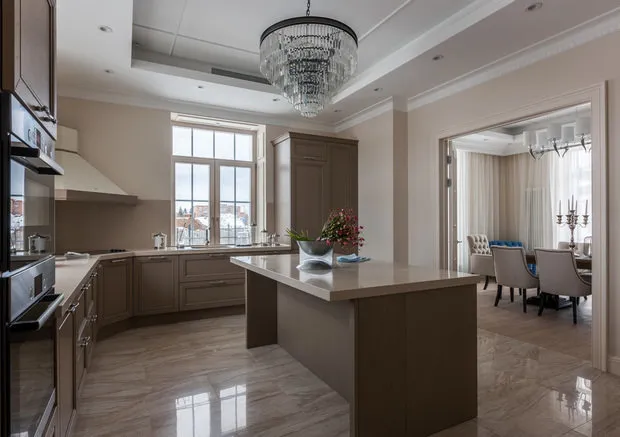
Multi-Level Systems
Their use is justified in spacious kitchens with ceiling heights of at least 3 meters. These rooms are typical for Stalin-era buildings. In these constructions, relatively small kitchens with high ceilings create an imbalance in the interior design. Installing a multi-level structure exactly solves this issue, making the kitchen more cozy.
Multi-level ceilings not only hide height differences but also allow for quite voluminous utility installations: for example, to set up a ventilation system or run pipes from a split-system air conditioner. In terms of design, ceiling levels highlight one or another zone and help focus attention, for example, on exclusive furniture.
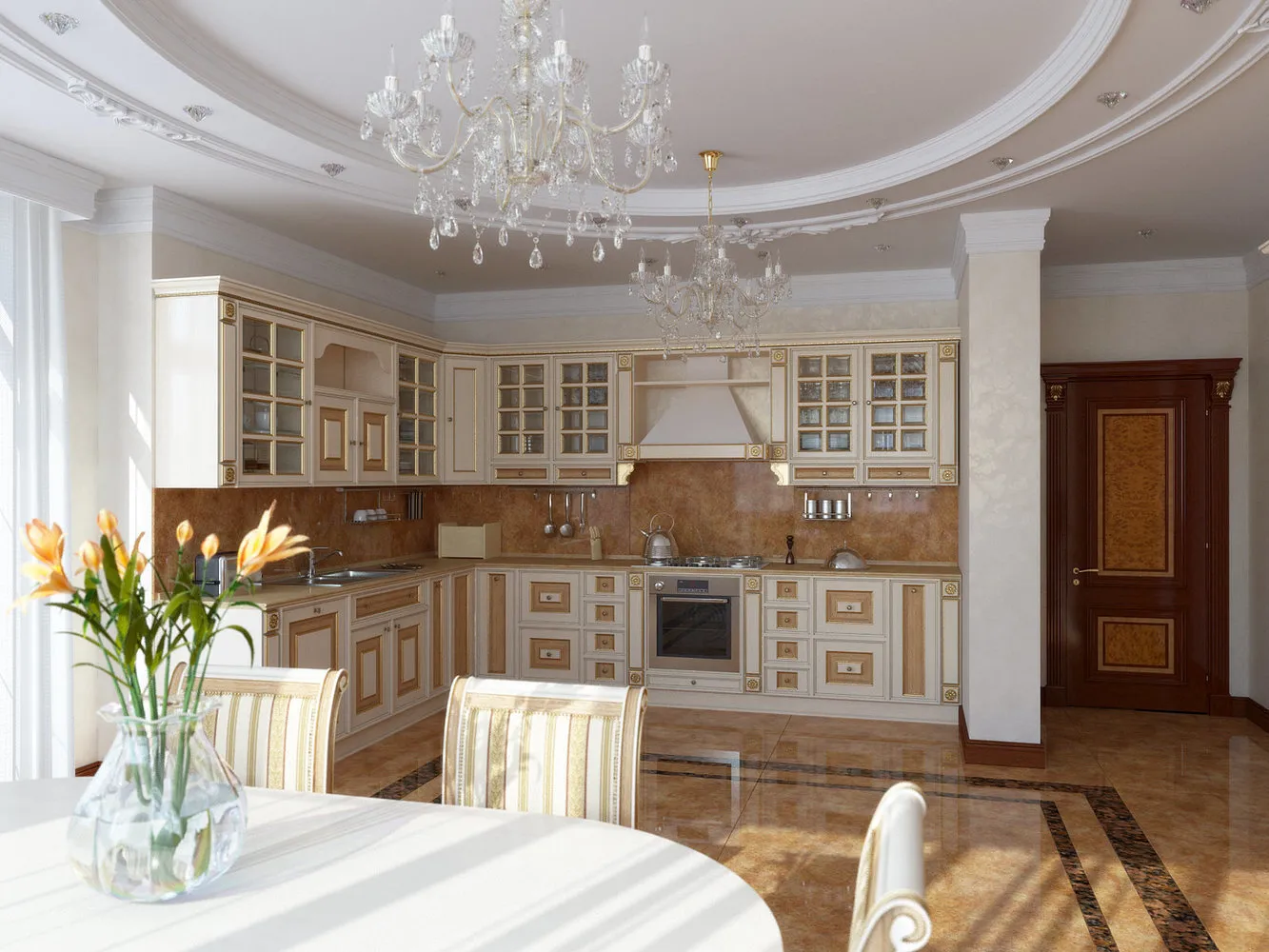
Lighted Ceilings
At the initial stage, it's necessary to decide on the type of bulbs. There are several options:
- with LEDs: point lighting or strips – the latter is preferred in constructions with side niches;
- with regular light fixtures: the most popular option, as installation can be done by yourself;
- traditional chandelier: remember that its mounting is done to the ceiling frame or base (depending on the weight of the fixture);
- neon lighting: better used as an additional light source (professional help may be needed).
When installing by yourself, take into account the correspondence of bulb power and electrical wire cross-section.
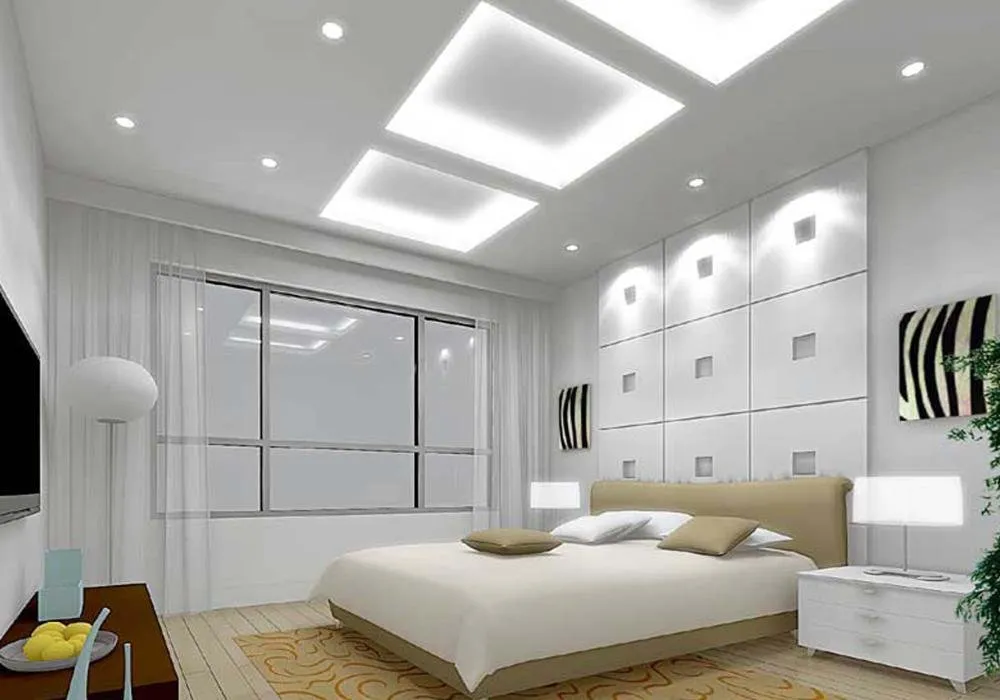
Shape and Texture of Gypsum Board Ceilings
When choosing the shape of the future ceiling, you should refer to the configuration of the room itself. Also, it's important to consider that GKL of a certain thickness has its own maximum bending radius. What else can be said about the shape of the structure?
- The rectangular system is universal and suitable for a room of any area and ceiling height.
- Square structures are most appropriate for narrow kitchens and allow highlighting the central zone.
- Curved ceiling designs look better in spacious kitchens.
Now about the texture. A glossy surface, especially if there are many spotlights on the ceiling, is ideal for small rooms as it visually expands them. To achieve a shiny ceiling, you can use appropriate paints. Mat structures are also popular and considered classic. This surface doesn't strain the eyes with constant reflections and brings tranquility and peace to the kitchen.
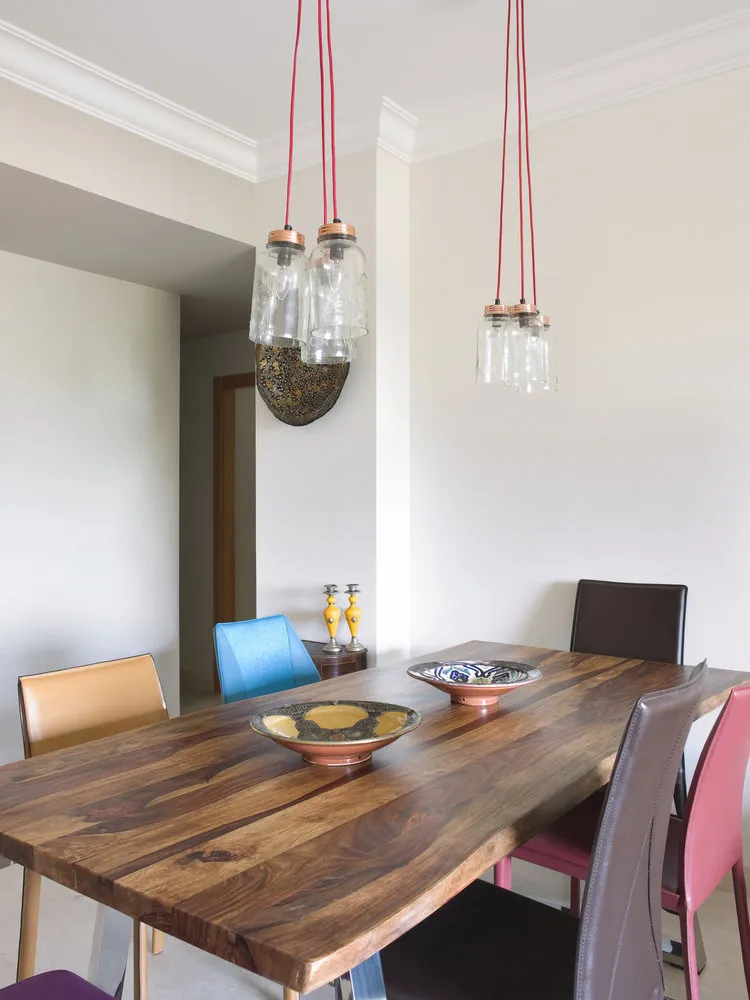
Color Solutions
When choosing shades for the ceiling, it's important to remember that they can visually affect the geometry of the space. Dark colors will reduce the room, while light ones, on the contrary, expand it. However, combining shades is not prohibited. In this case, dark colors will emphasize specific parts of the kitchen.
In most cases, pastel tones are used – they calm and set a pleasant mood. Bright, eye-catching colors are not acceptable as they cause irritation and can even be a reason for bad mood and discomfort.
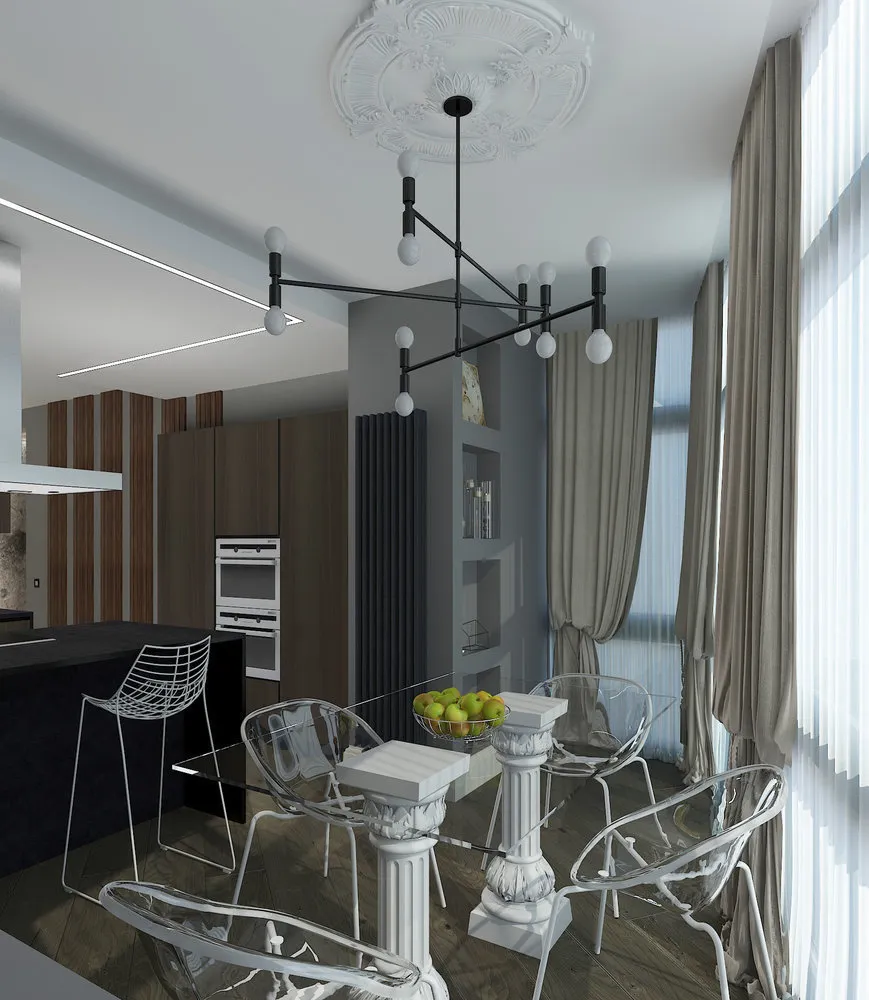
Finishing Methods for Ceilings
Gypsum board sheets sold in stores with moisture resistance have a green color. During finishing of the kitchen with this material, spackling is done. But what to do next?
- Painting. Gypsum board accepts almost any composition (water-emulsion, water-dispersed, acrylic, latex, silicone, and silicate). It's not necessary to paint the entire surface in one color: several shades can be used, highlighting a particular zone.
- Wallpapering. Using wallpaper is relevant for some styles, such as 'Provence'. You can make boxes from gypsum board imitating beams and then paper them with washable wallpapers featuring a wood pattern. However, thermoplastic film is more often used for such purposes – it reproduces the texture of natural material more accurately and is much easier to apply than wallpaper.
- Plastering. Several types of compositions are used. Usually, this is textured, silk, or Venetian plaster. The last option is well-suited for decorating the kitchen in baroque or classic style.
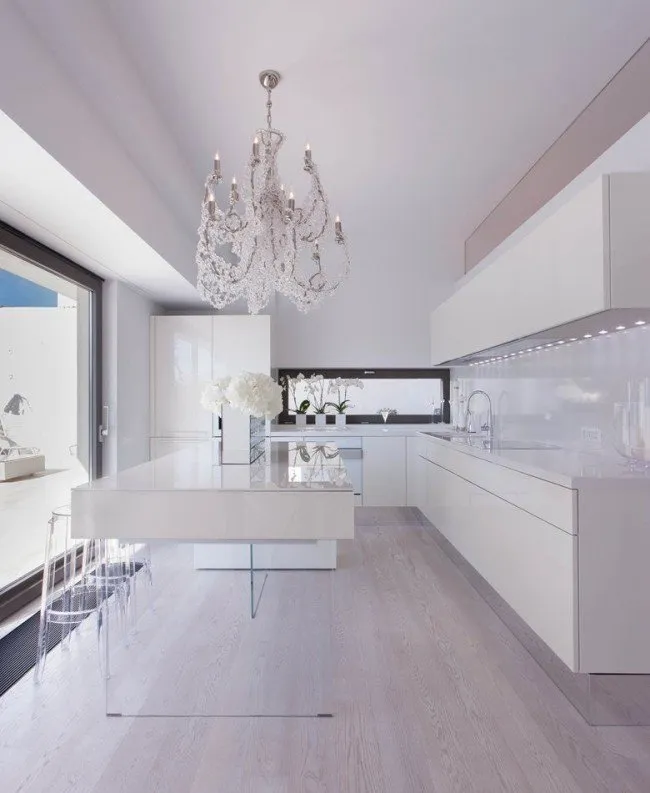
Gypsum Board Ceiling Over Kitchen Cabinet
To emphasize the working zone and kitchen cabinet, i.e., to create zoning, it's better to use two-level structures. For example, this can be a gypsum board box stretched along the entire perimeter and forming a niche in the center of the ceiling. A chandelier can be placed in this niche. In the lower part of the ceiling above the cabinet, install spotlights with adjustable tilt angle. These fixtures will well illuminate the desired area. The working zone can also be highlighted by using a different, more dark shade compared to the ceiling niche. By the way, the latter doesn't have to be square or rectangular: you can create a circular or even oval structure.
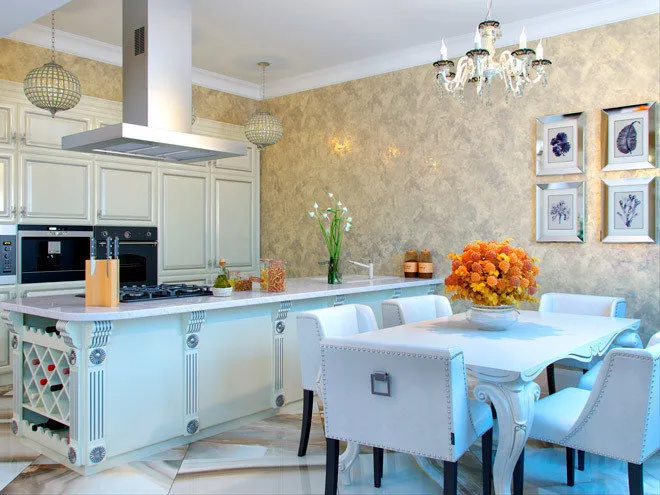
Gypsum Board Ceilings for Small Kitchen
A small room area is by no means a hindrance to creating an attractive ceiling design. It's important to follow some rules:
- small height implies using only single-level structures that consume minimal centimeters;
- even a single-level system can be stylish if you use multi-colored lighting;
- light colors and glossy texture visually expand a small room.
But what if you still want to create a two-level system, but the kitchen height doesn't allow it? There's an intermediate solution: you need to 'attach' a wide cornice to the single-level structure, positioned slightly below the general level. If you also organize lighting on the cornice using LED strips, you will definitely achieve the desired impression.
Gypsum board is an affordable and flexible material that allows creating various ceiling structures. These qualities explain its popularity and demand, both in spacious rooms and small kitchens.
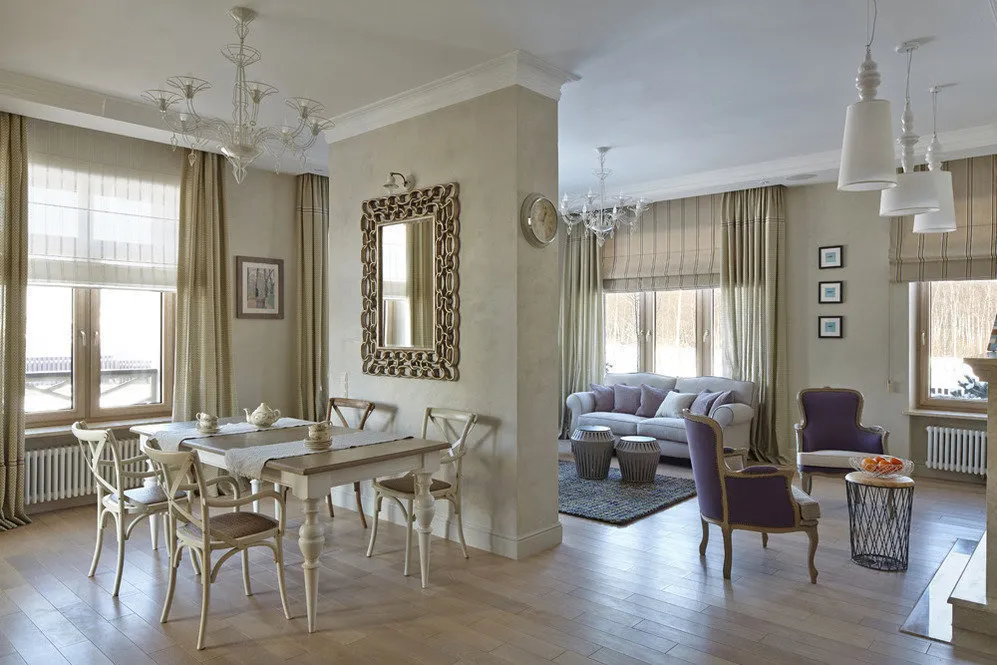
Design: Irina Bronnikova
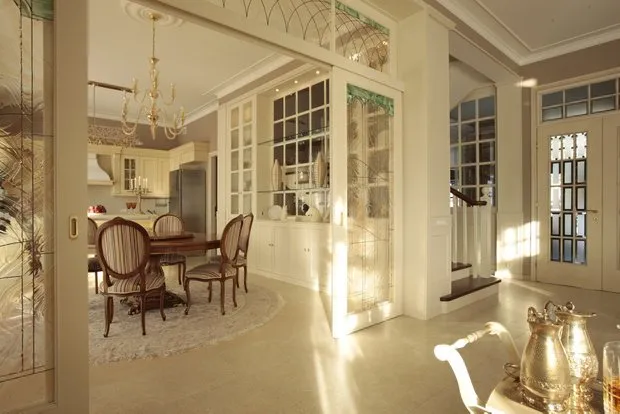

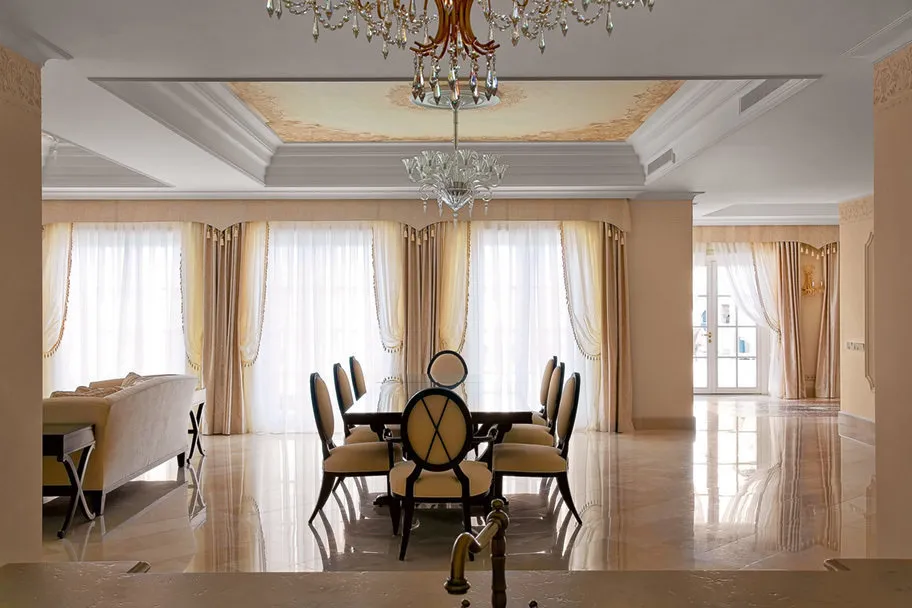
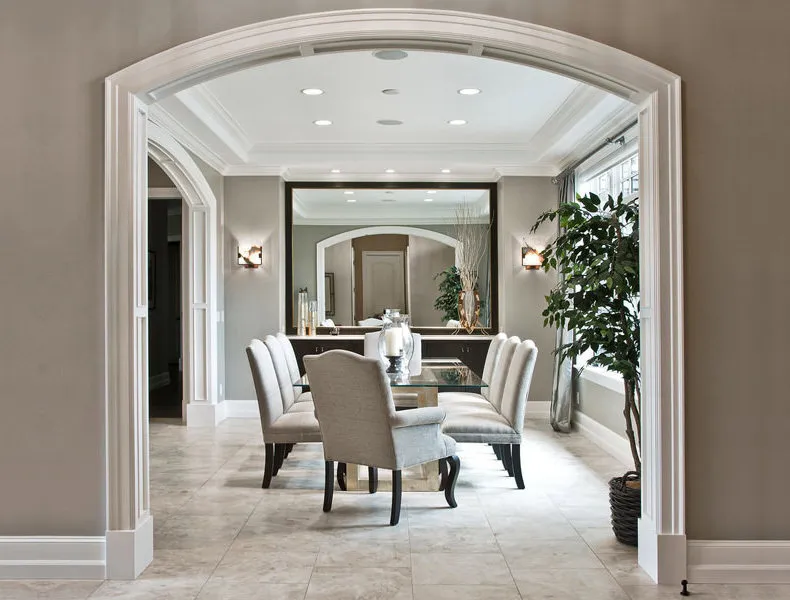
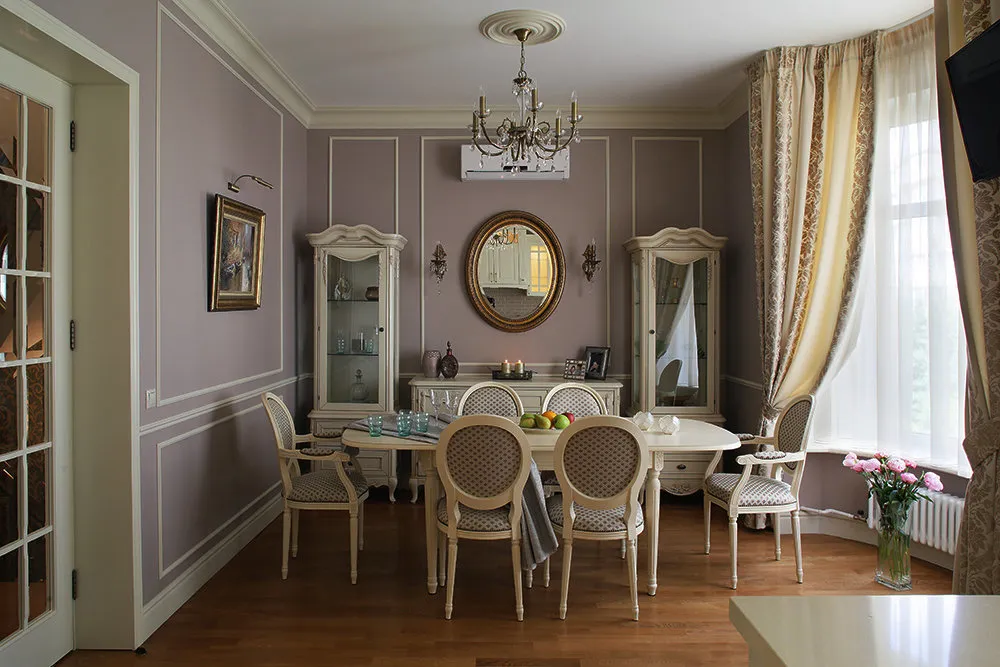

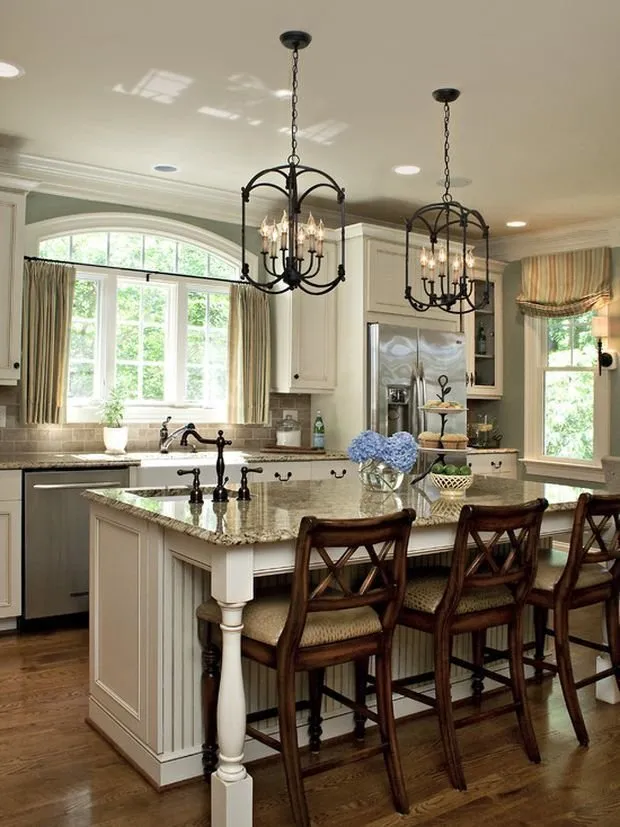

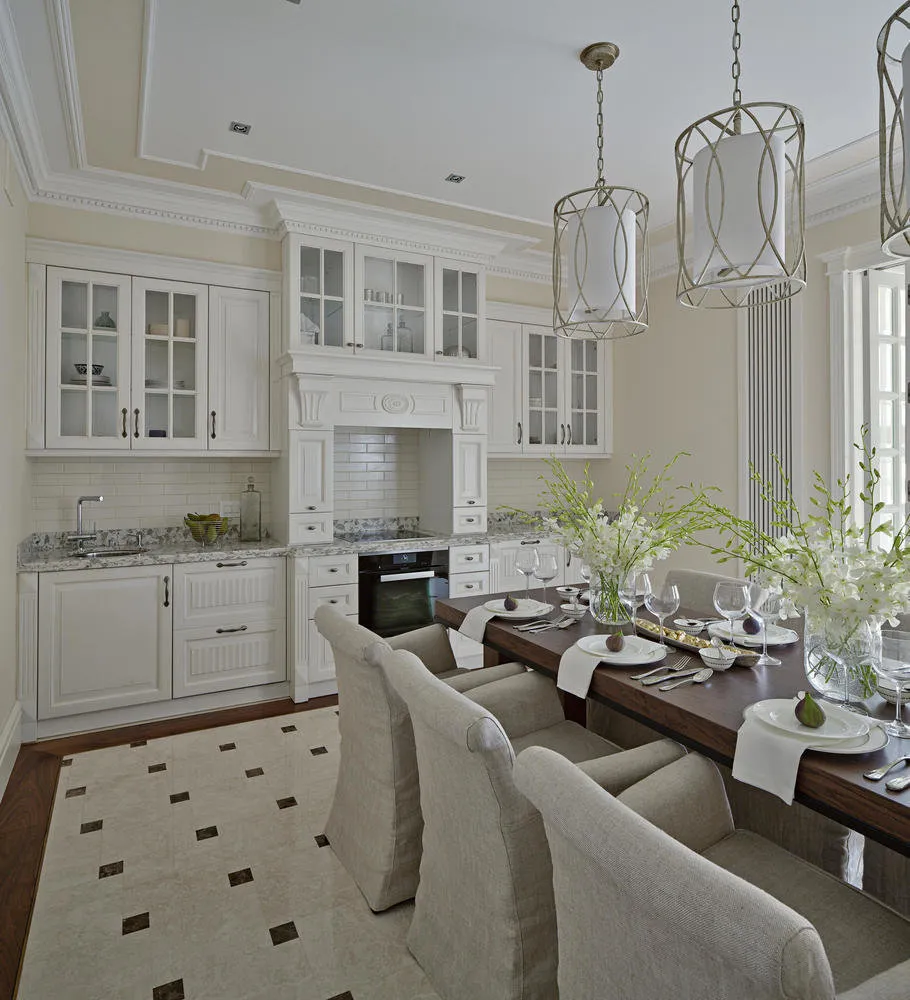


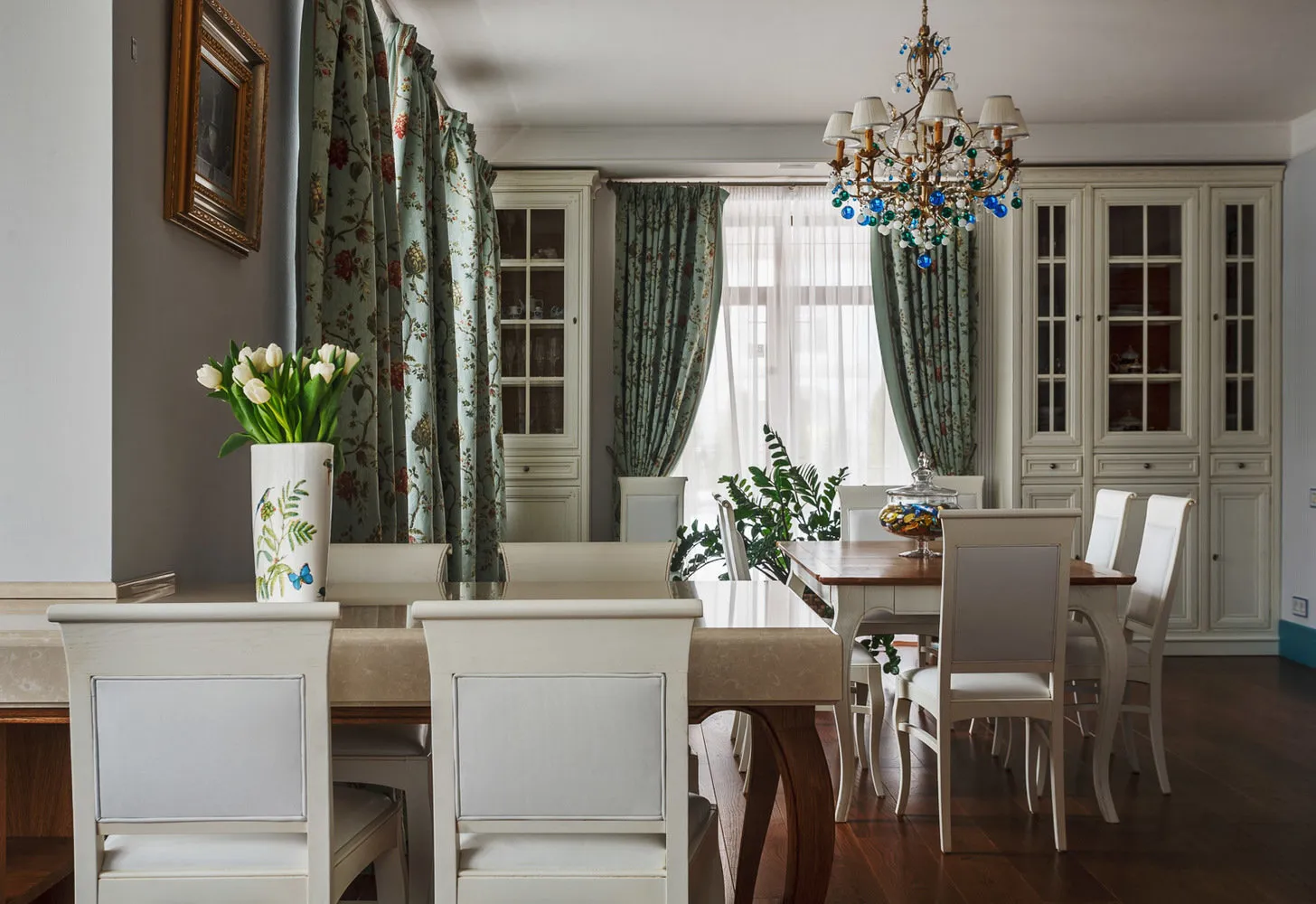
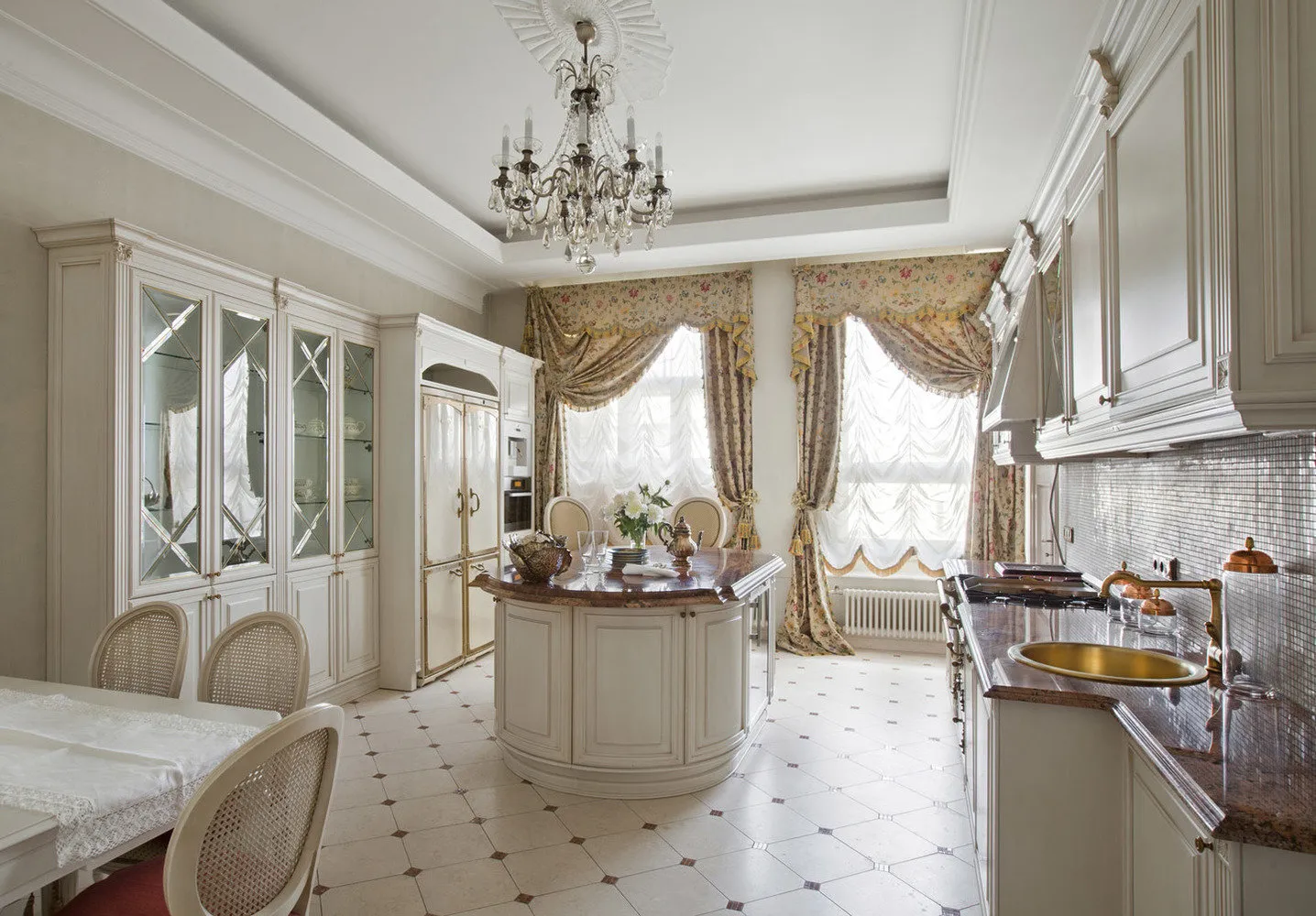
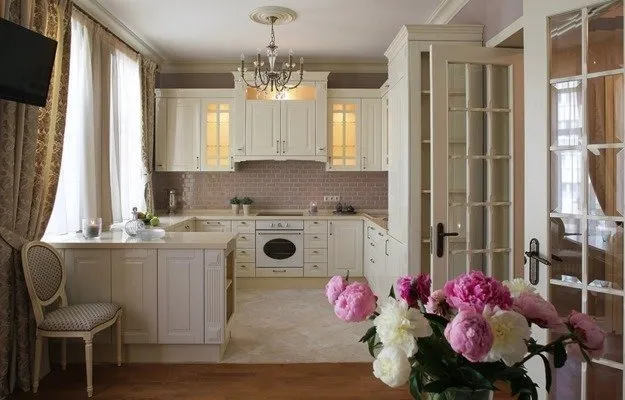
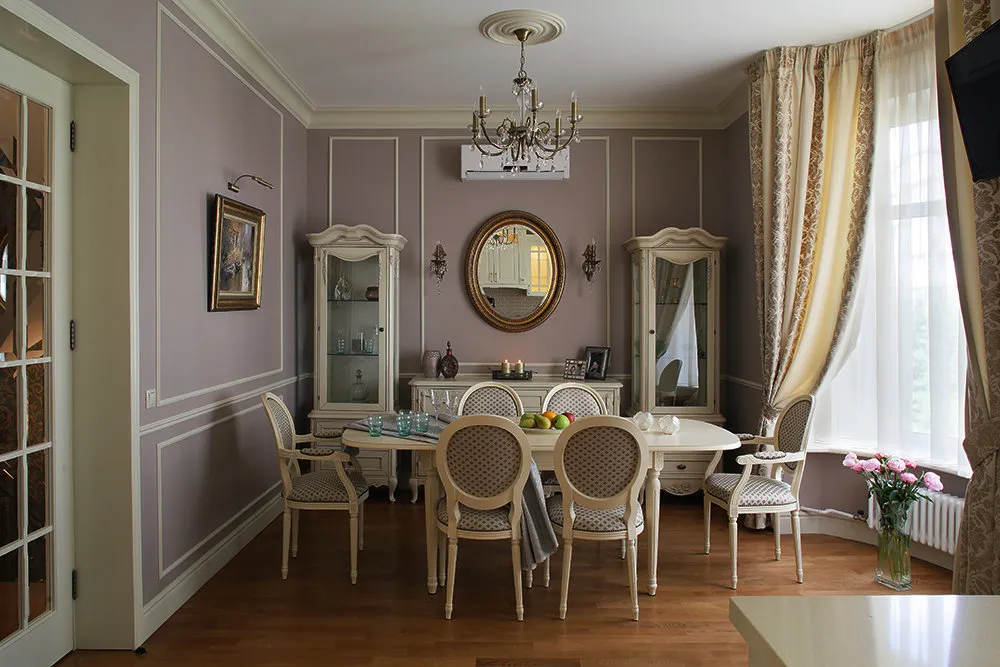

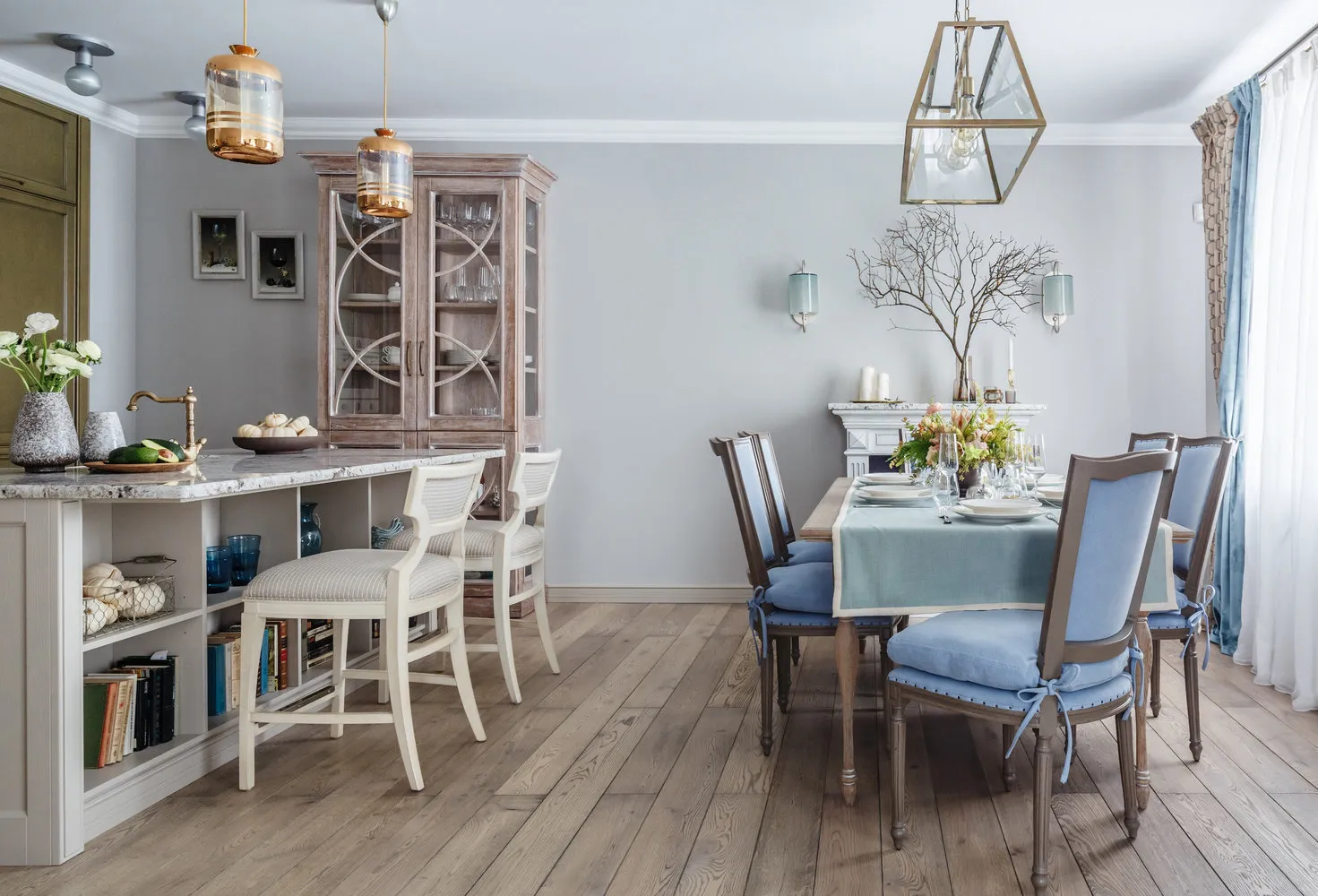
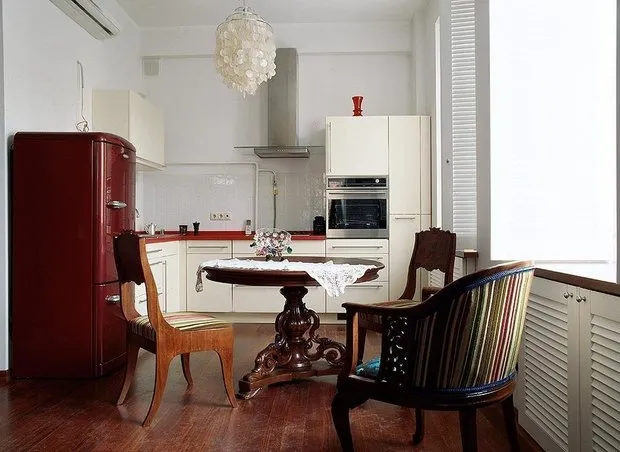
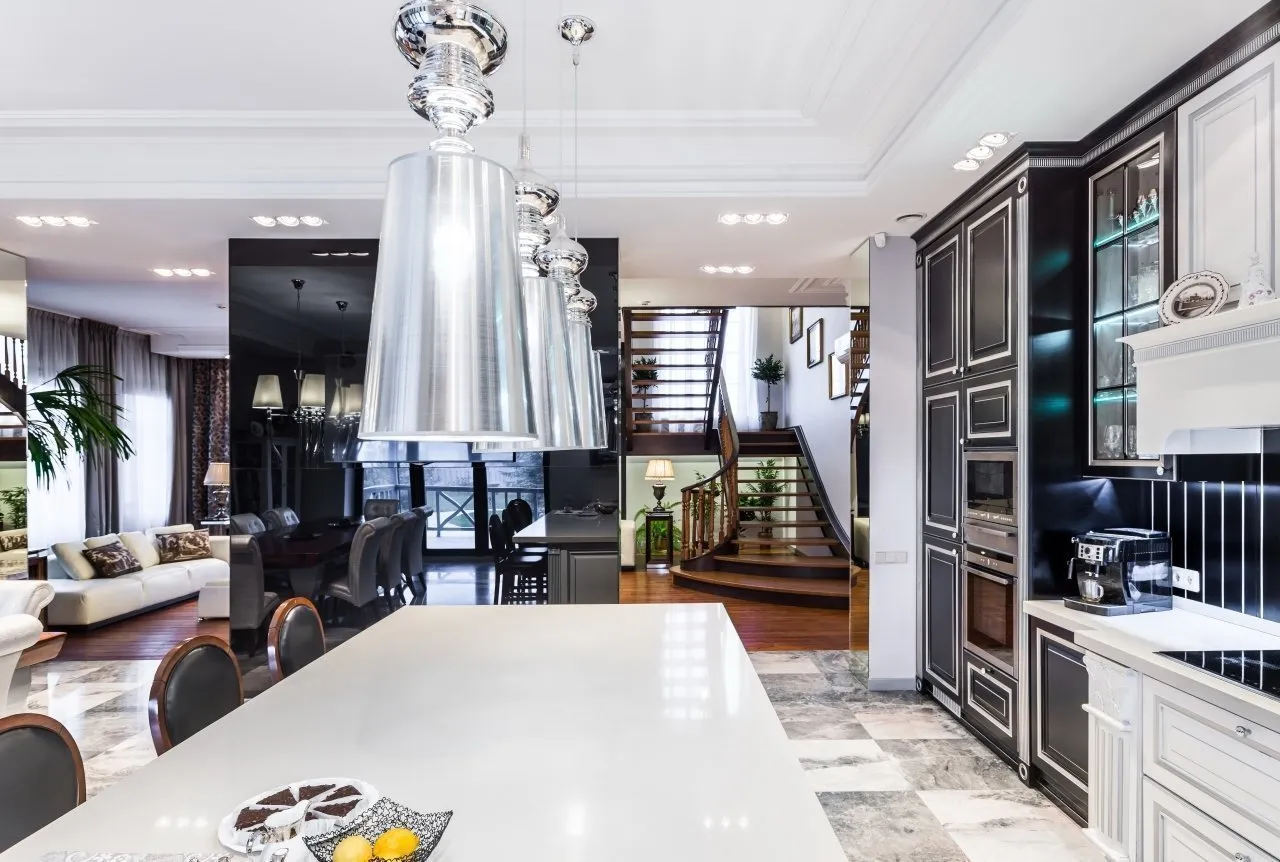


Design: Valeria Dzhyuba
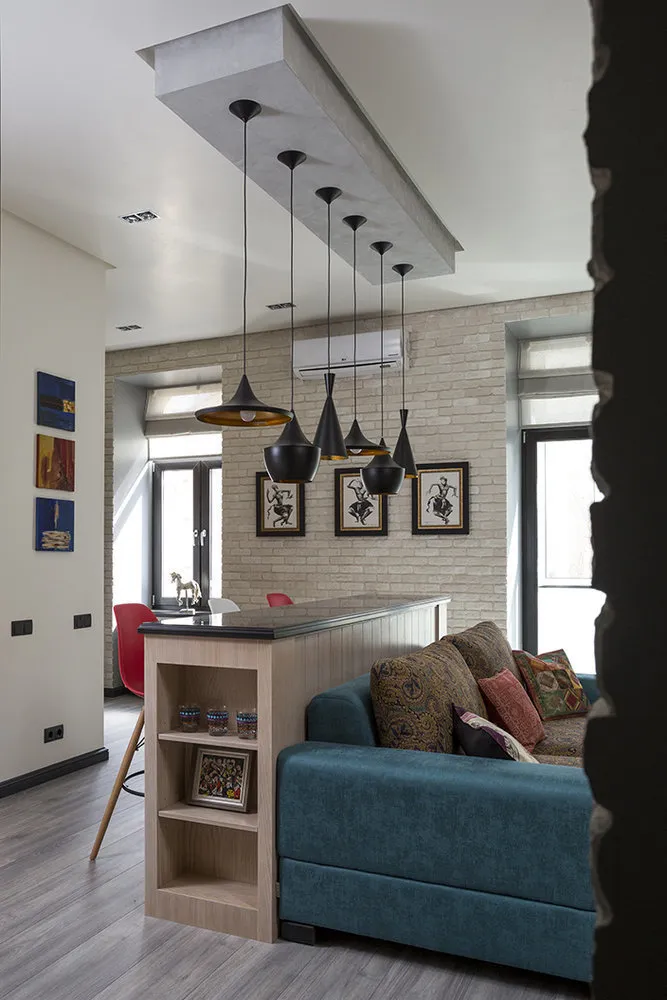
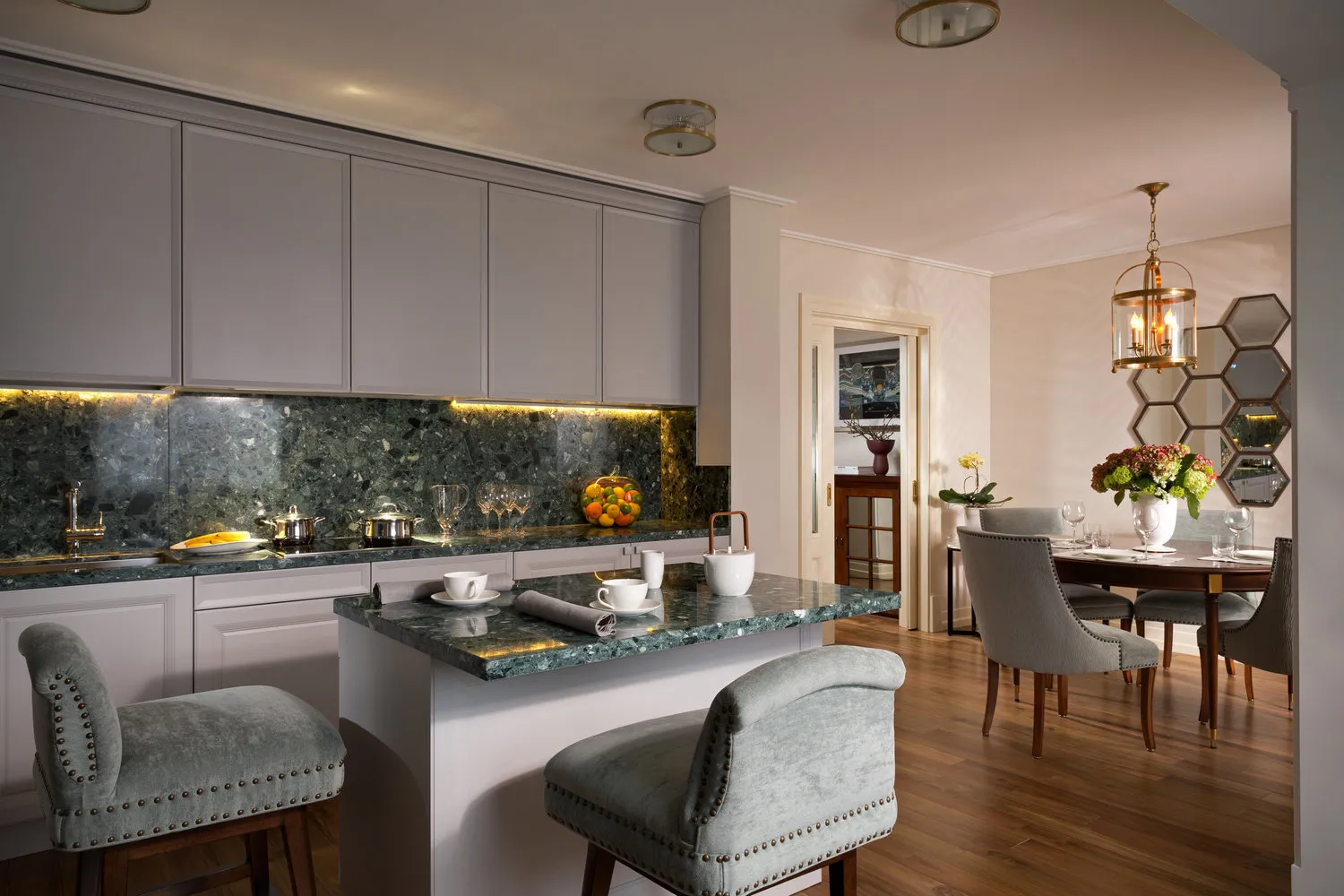
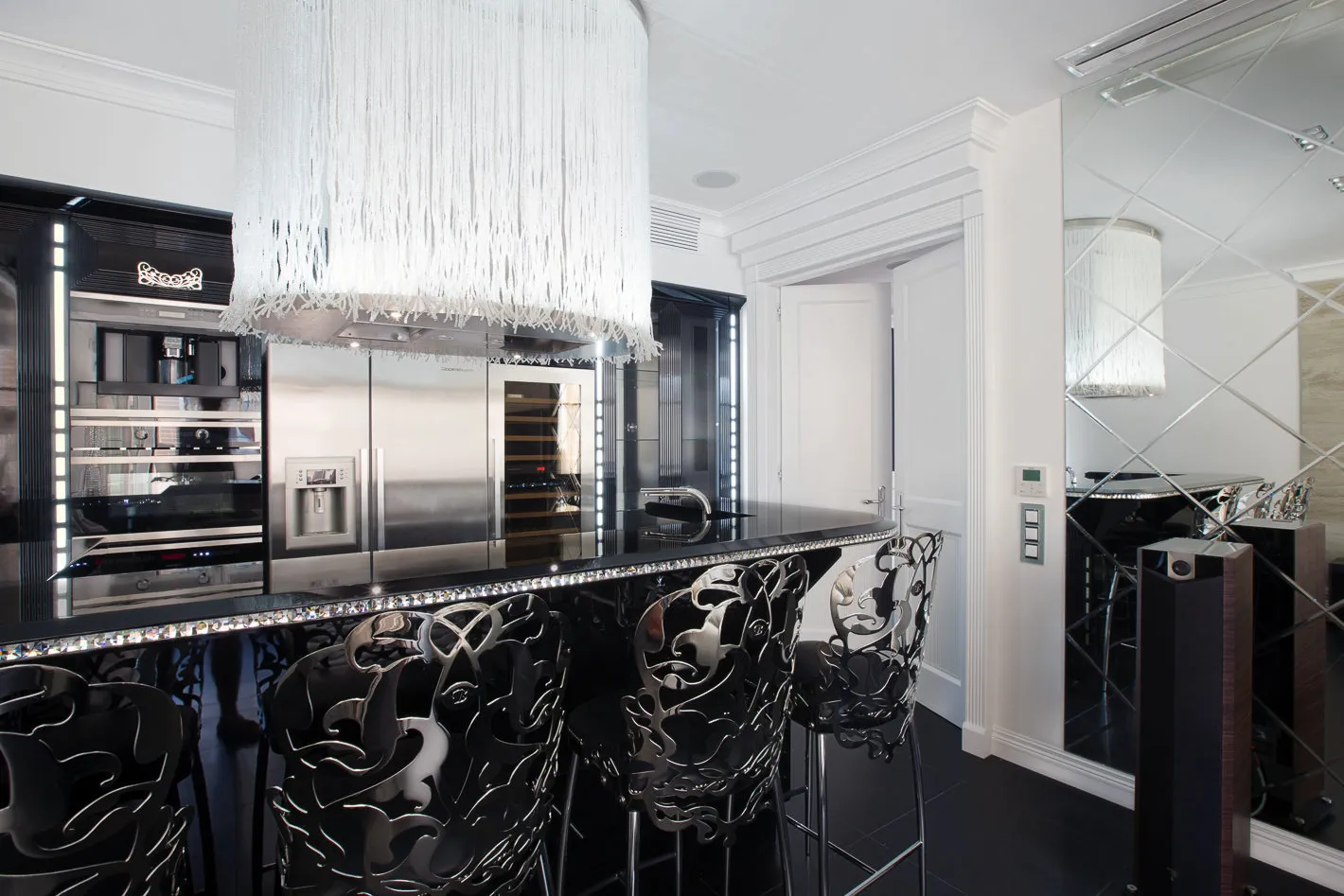

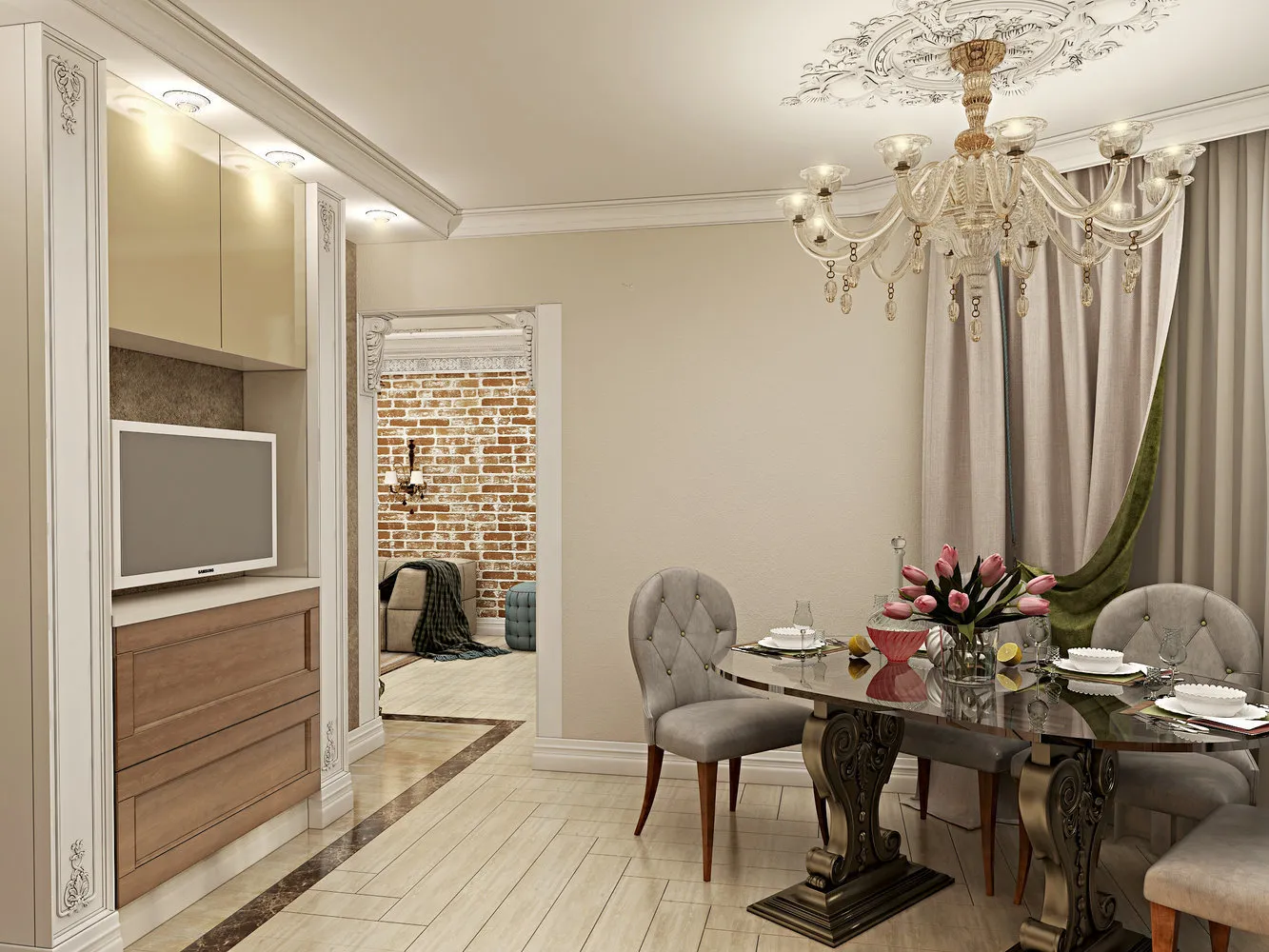
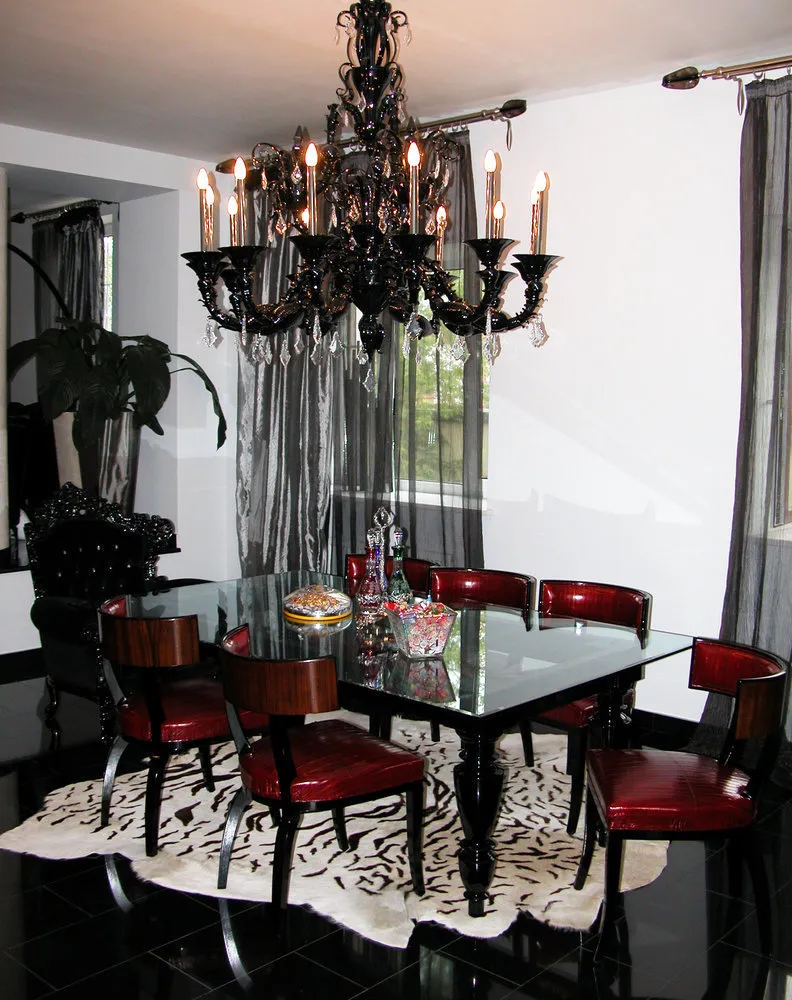


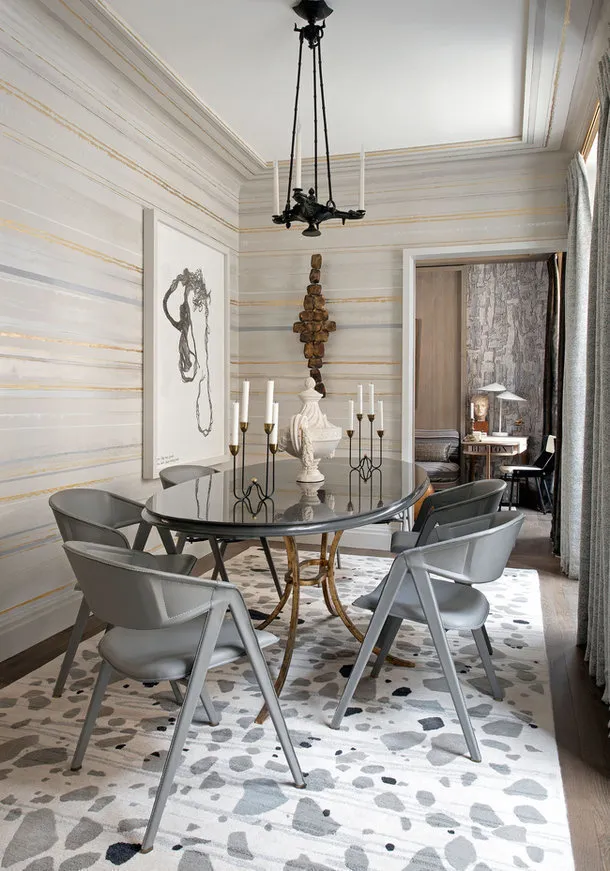
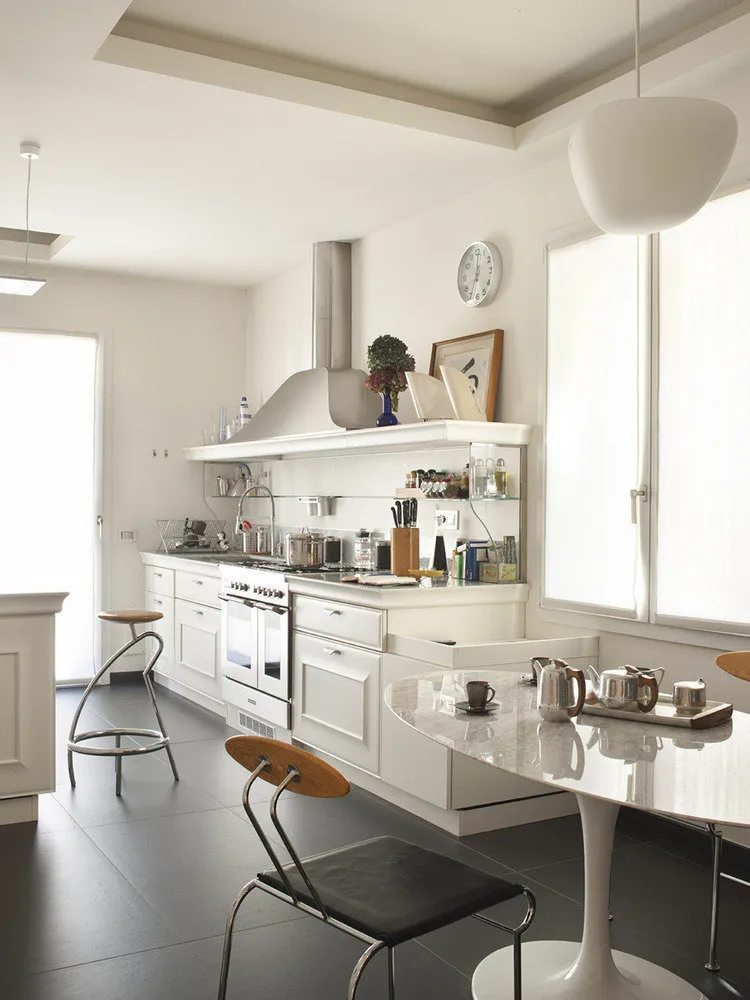


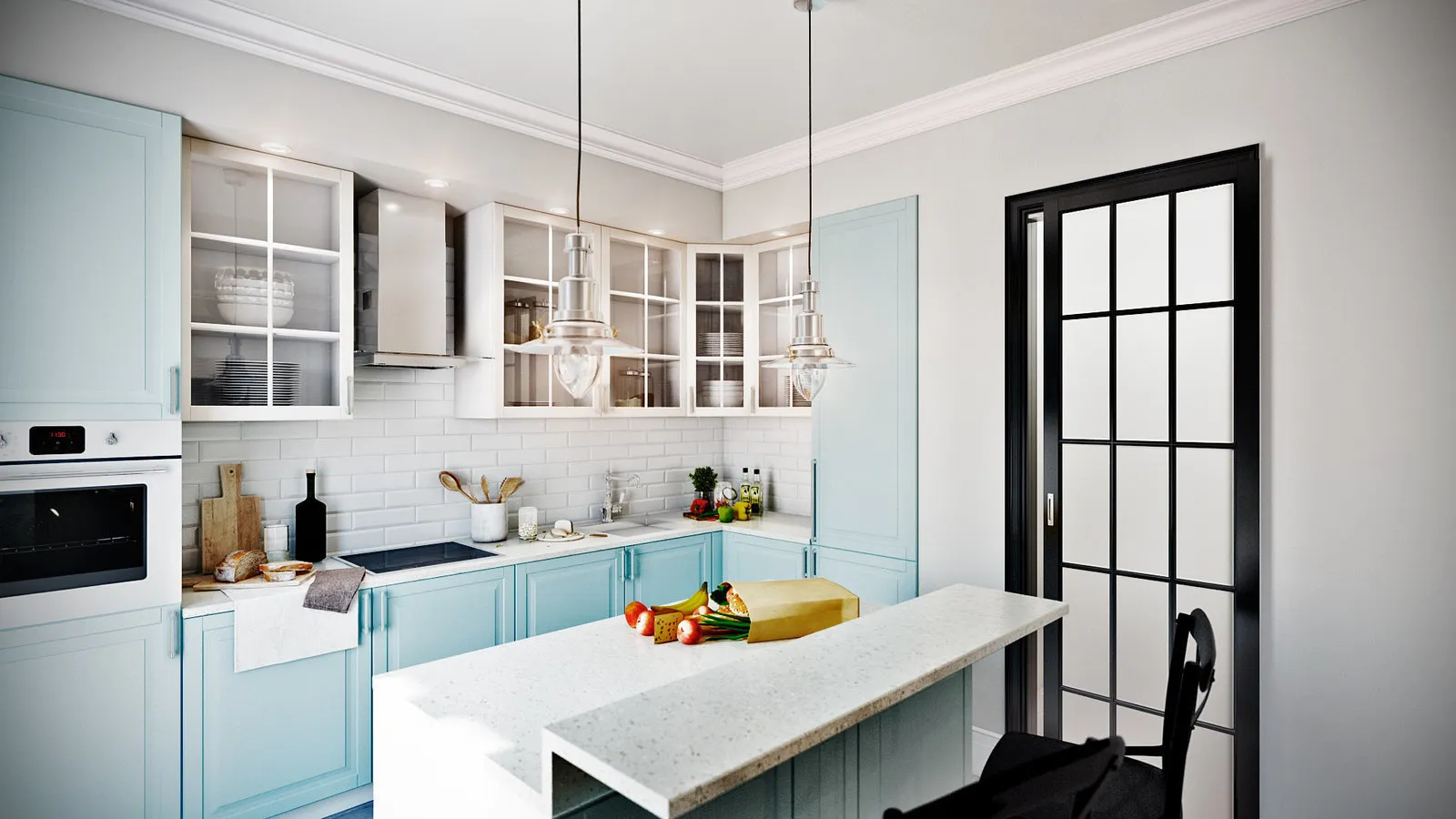
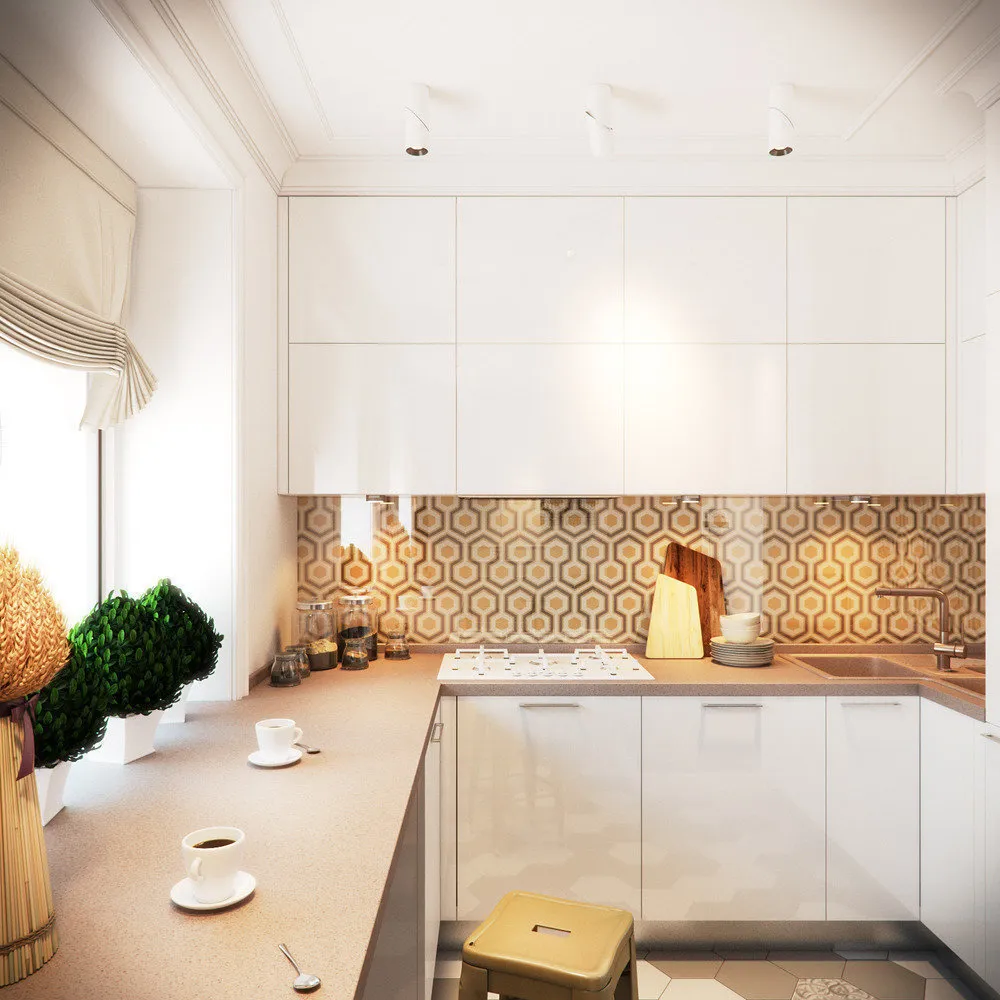
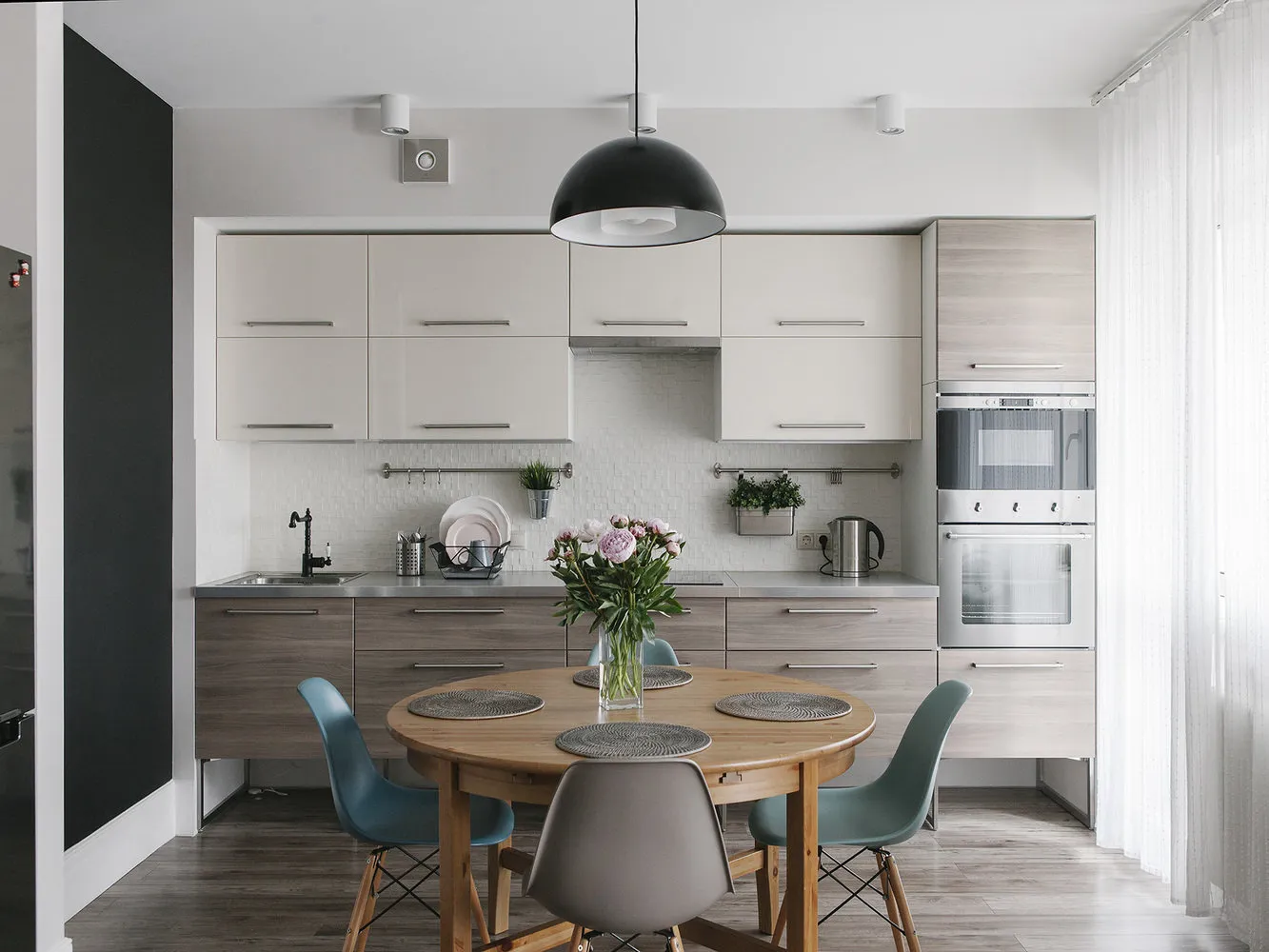
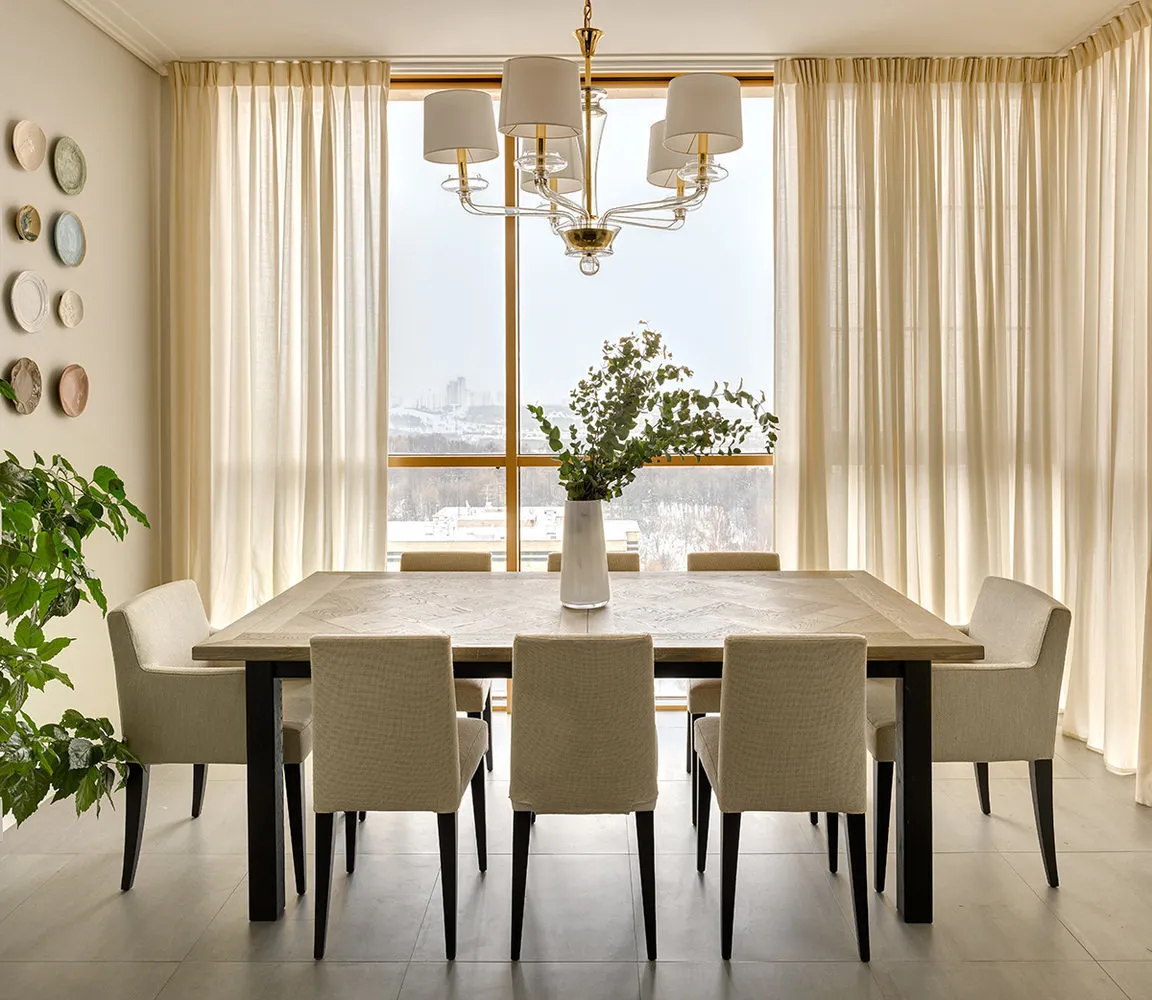
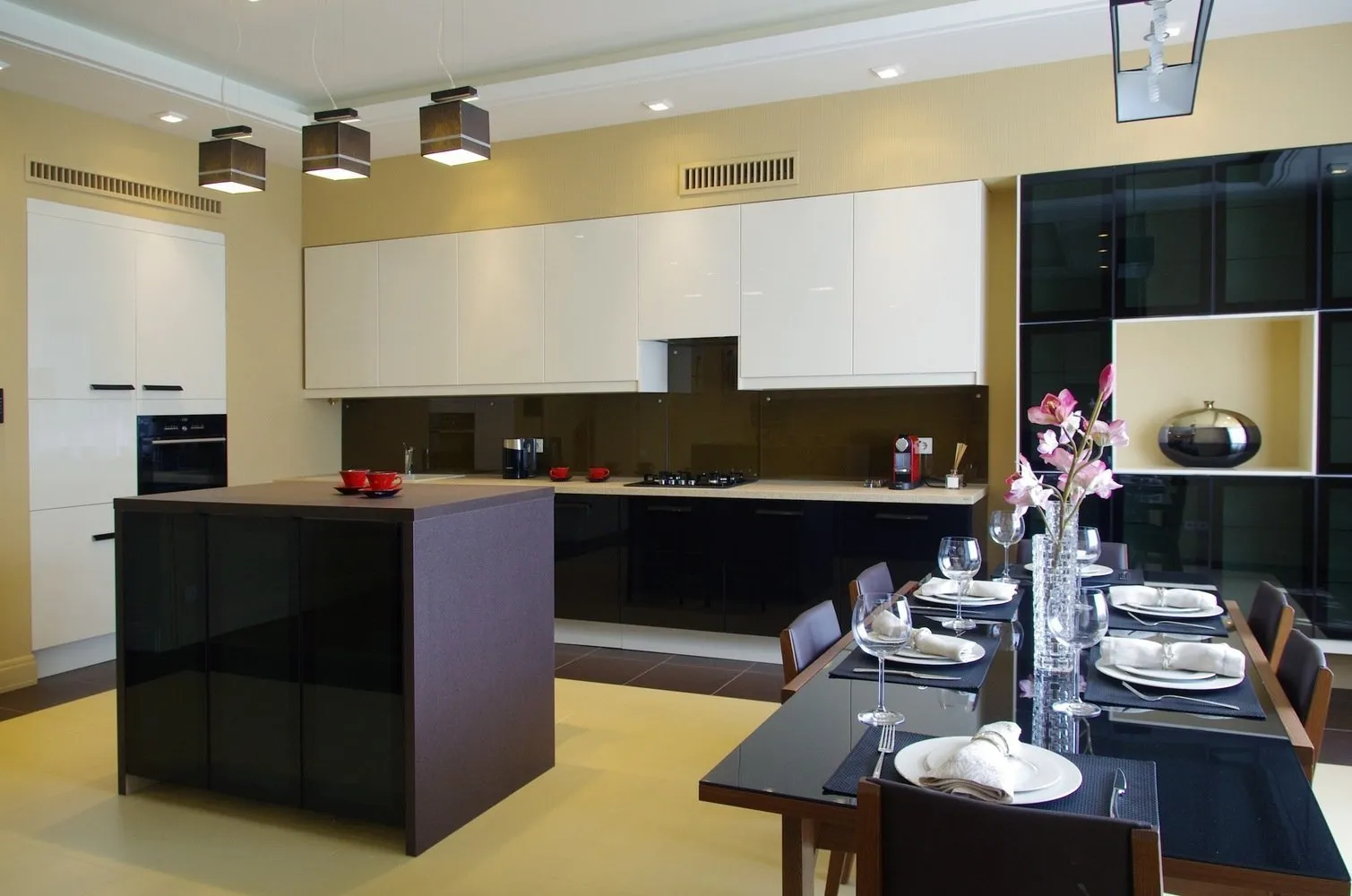
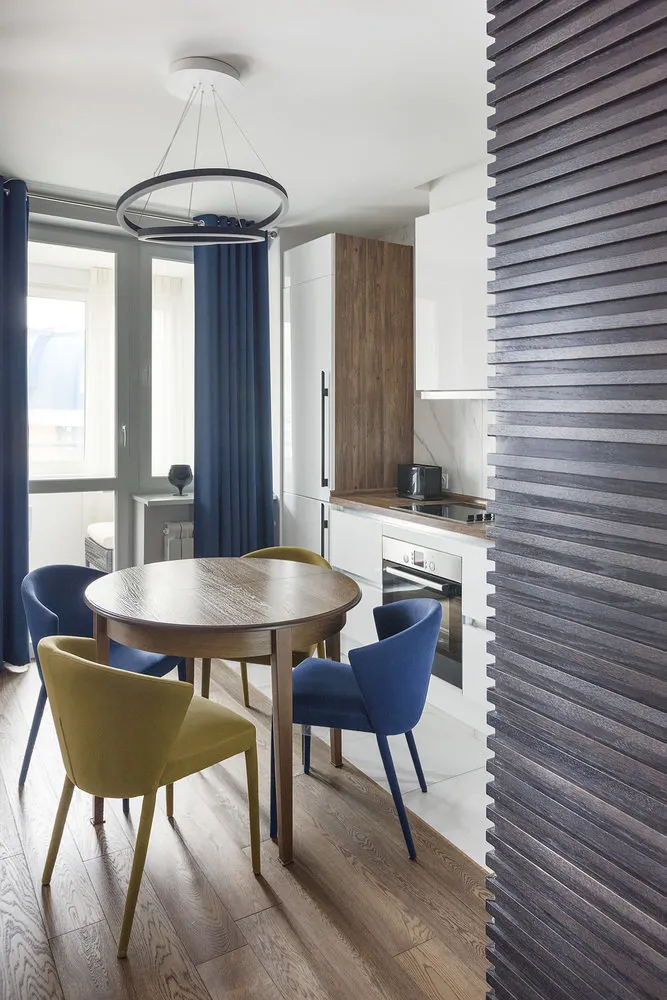



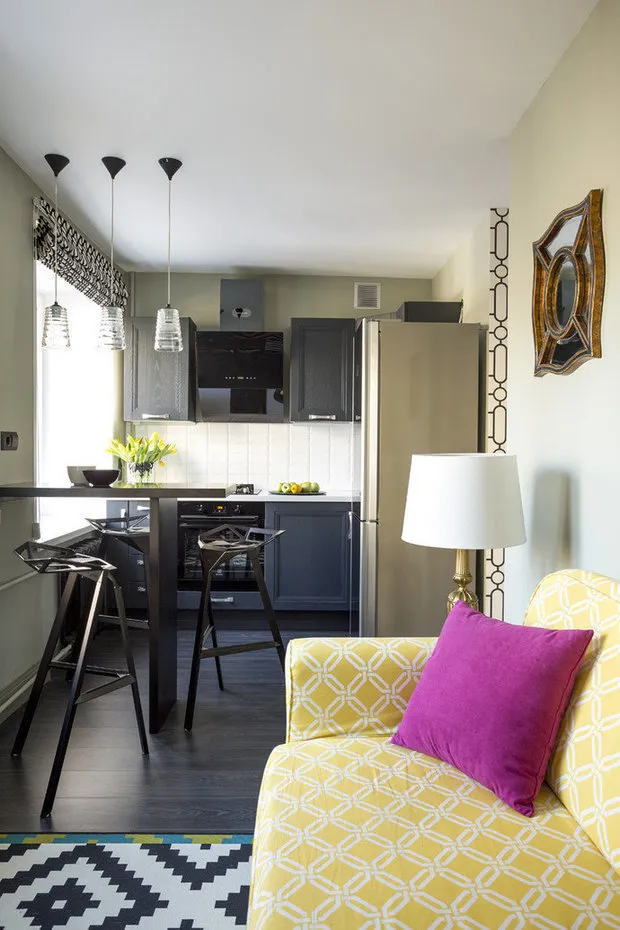
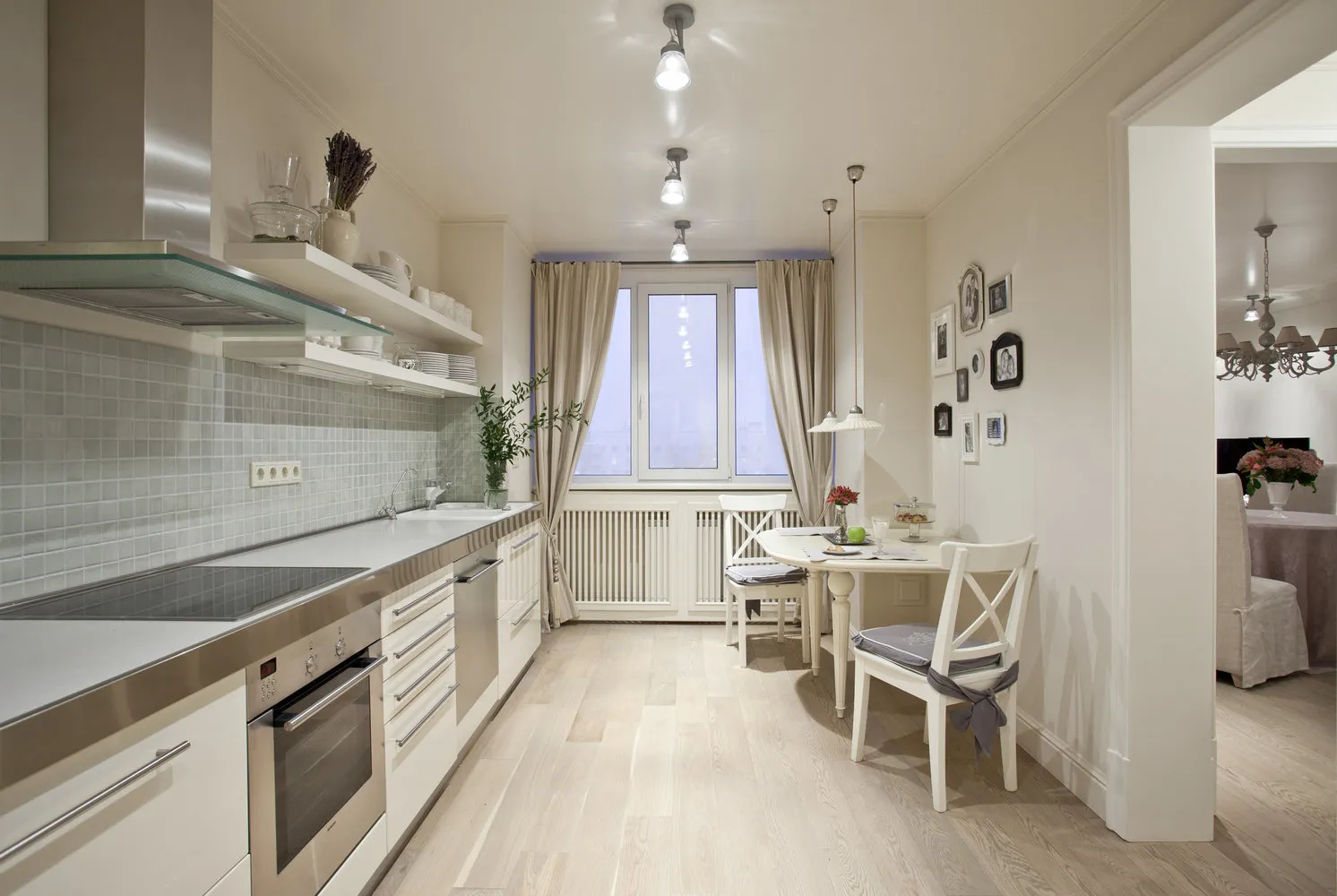
Combined Gypsum Board and Suspended Fabric Ceiling for Kitchen: Appearance and Features of Installation
On the cover design project by Olesya Sitnikova, Ekaterina Tulupova, and Anna Bakhmetova.
More articles:
 How to Quickly Update Interior Design: 7 Ideas
How to Quickly Update Interior Design: 7 Ideas 8 Tips for Planning a Two-Room Apartment
8 Tips for Planning a Two-Room Apartment How to Maintain Order at Home with a Young Child
How to Maintain Order at Home with a Young Child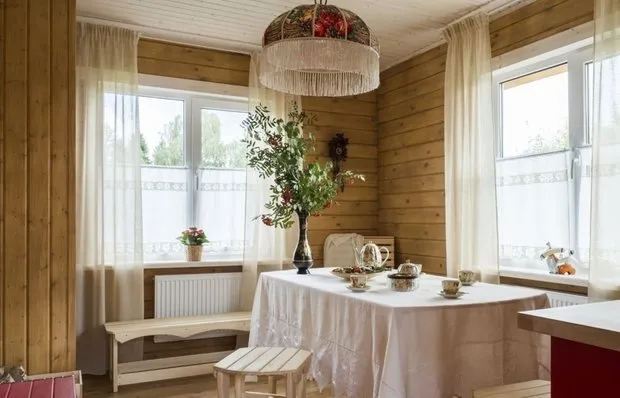 Building a Bathhouse: 9 Useful Tips from Professionals
Building a Bathhouse: 9 Useful Tips from Professionals Kitchen Interior Design with Sofa
Kitchen Interior Design with Sofa Good renovation on a budget: how to save money choosing finishes
Good renovation on a budget: how to save money choosing finishes 6 Home Inventions That Every Young Mom Needs
6 Home Inventions That Every Young Mom Needs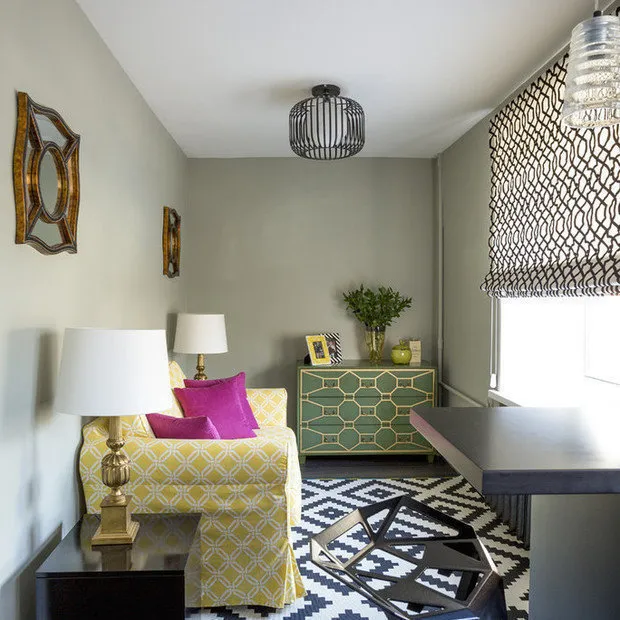 Editor's Choice: Furniture and Storage Accessories
Editor's Choice: Furniture and Storage Accessories